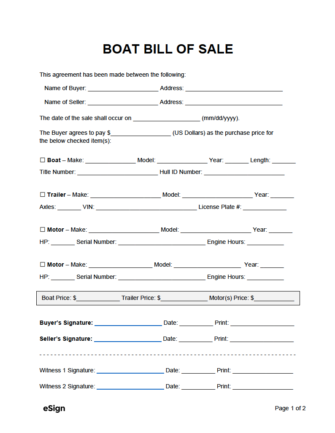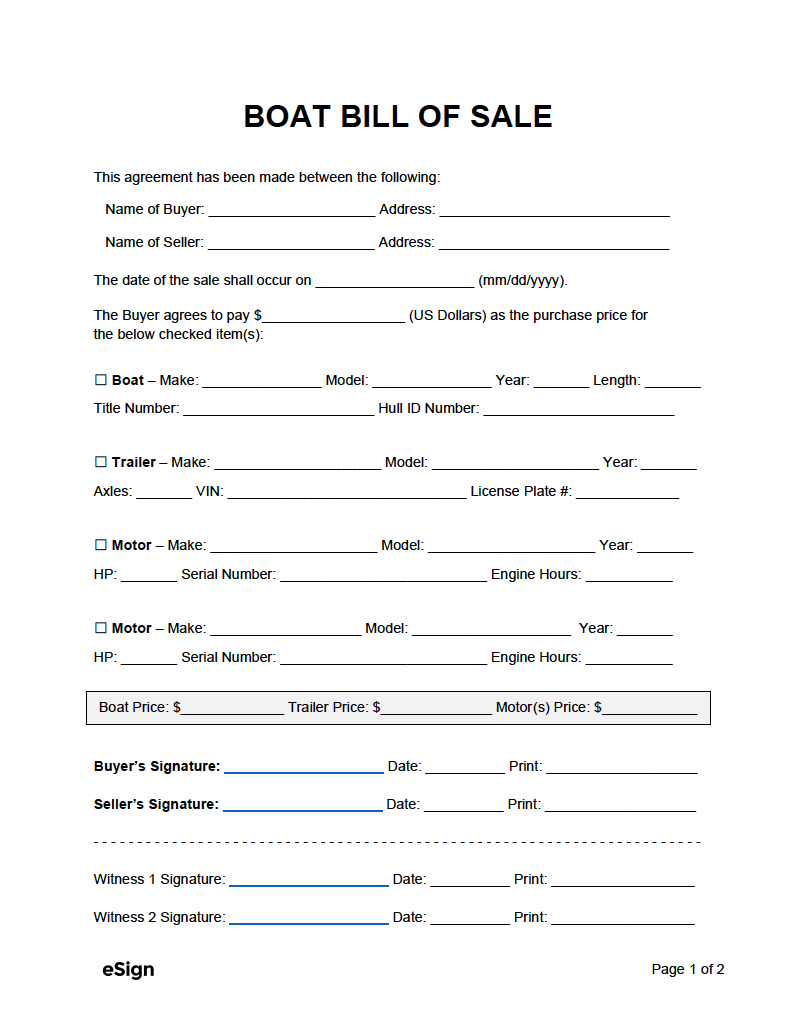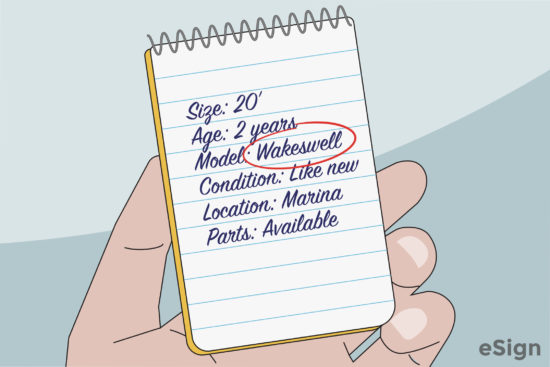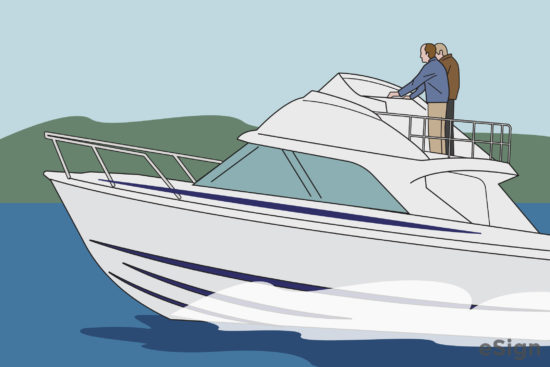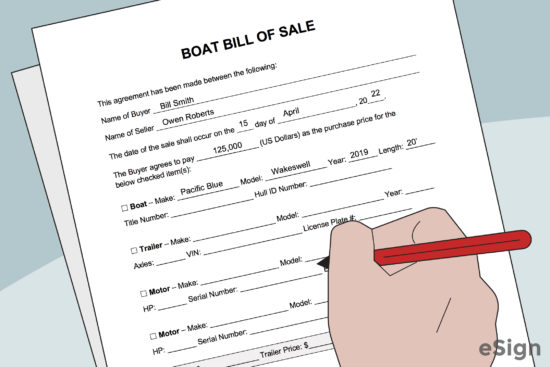Summary
- Proves ownership of a new or used boat.
- Often required by state DMVs for first-time registrations.
- Can be thought of as a “receipt” for the sale of watercraft.
By State
- Alabama
- Alaska
- Arizona
- Arkansas
- California
- Colorado
- Connecticut
- Delaware
- Florida
- Georgia
- Hawaii
- Idaho
- Illinois
- Indiana
- Iowa
- Kansas
- Kentucky
- Louisiana
- Maine
- Maryland
- Massachusetts
- Michigan
- Minnesota
- Mississippi
- Missouri
- Montana
- Nebraska
- Nevada
- New Hampshire
- New Jersey
- New Mexico
- New York
- North Carolina
- North Dakota
- Ohio
- Oklahoma
- Oregon
- Pennsylvania
- Rhode Island
- South Carolina
- South Dakota
- Tennessee
- Texas
- Utah
- Vermont
- Virginia
- Washington
- West Virginia
- Wisconsin
- Wyoming
Sample
Download: PDF, Word (.docx), OpenDocument
BOAT BILL OF SALE
This agreement has been made between the following:
Buyer: [BUYER NAME]
Address: [ADDRESS]
Seller: [SELLER NAME]
Address: [ADDRESS]
The date of the sale shall occur on [MM/DD/YYYY].
The Buyer agrees to pay $[AMOUNT] for the following:
Boat Make: [BOAT MAKE] Boat Model: [BOAT MODEL]
Year: [BOAT YEAR] Length: [BOAT LENGTH]
Title #: [TITLE #] Hull ID #: [BOAT ID #]
Buyer’s Signature: ____________________ Date: [MM/DD/YYYY]
Printed Name: [BUYER NAME]
Seller’s Signature: ____________________ Date: [MM/DD/YYYY]
Printed Name: [SELLER NAME]
Boat Bill of Sale Defined
A boat bill of sale, in conjunction with a title, proves the ownership and transfer of a boat and is often required for first-time registrations. In most states, registration is only required for motor boats and sailboats over a certain length.
The bill of sale lists the type of boat sold, the names and addresses of the buyer and seller, how much the boat sold for, and the transaction date.
Boat title – A boat title is the actual proof of ownership, while a bill of sale only proves that the new owner obtained the title legally.
How to Sell a Boat
Step 1 – Prepare the Boat
Before being put up for sale, a boat should be thoroughly cleaned and examined for damages. To improve its appearance and fetch a better price, a professional boat detailer can be hired.
Step 2 – Set the Price
When setting a price for a used boat, the seller can start by searching online for what boats of the same make, model, year, and condition are selling for. The boat’s condition should be considered when pricing and presented honestly to the buyer.
Factors that affect boat pricing
- Size
- Age
- Model
- Condition
- Location (geographically)
- Aftermarket parts
Step 3 – Put the Boat Up for Sale
Sellers can list their boat for sale online, place it in view of heavy foot or vehicle traffic with a “For Sale” sign, or purchase ads in newspapers and other print media.
Step 4 – Show the Boat
Interested buyers will usually want to inspect the boat in person before agreeing to buy it. For more expensive boats, bringing the seller on a test run is also common.
Step 5 – Complete Transaction and Bill of Sale
Once the boat owner and buyer have agreed on a price and money has exchanged hands, the bill of sale can be completed and signed.
The following information will need to be entered into the form:
- Names of the buyer and seller.
- Date of the sale.
- Boat description.
- Total amount paid for the boat.
- The signatures of the buyer and seller.
The original bill of sale should be provided to the buyer and a copy kept by the seller for their records.
